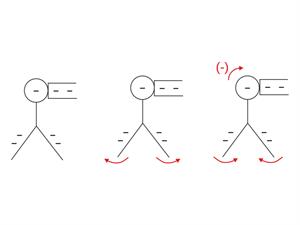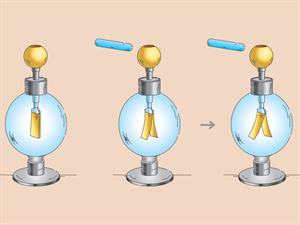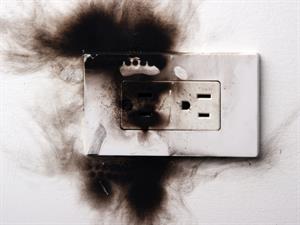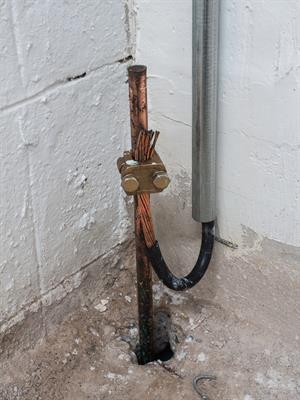
PUMPA - SMART LEARNING
எங்கள் ஆசிரியர்களுடன் 1-ஆன்-1 ஆலோசனை நேரத்தைப் பெறுங்கள். டாப்பர் ஆவதற்கு நாங்கள் பயிற்சி அளிப்போம்
Book Free DemoWe have learnt that if a body gains some electrons, it becomes negatively charged, and if a body loses some electrons, it becomes a positively charged body.
What happens if a charged body comes into contact with a conductor?
A conductor is a material which allows an electric charge to pass through it. So, when we touch a conductor (uncharged metal body) with a charged body, then the charges will spread evenly on the surface of the conductor. This method of transfer of charge is called conduction.

Charging by conduction
How to find whether a body is charged or uncharged?
We can find whether a body is charged or uncharged by using a device called an electroscope.
Structure and working of electroscopes:
- Gold and silver are mostly preferred to construct an electroscope because they are good conductors of electricity. If not, copper and aluminium can also be used.
- Electroscopes consists of two closely placed metallic aluminium foils or strips.
- The ends of the aluminium foils are attached to a metallic wire or rod. This whole hyphenated is kept in a glass bottle or glass jar since glass is a bad conductor.
- When a charged body comes into contact with the metallic wire, then the charges will spread uniformly on the aluminium foils.
- When the strips or aluminium foils are charged with similar charges, they repel each other and the aluminium foils become wide on, and it confirms the presence of charge on a body.

Transfer of charges
- If we touch the charged aluminium foil with our hands, then the charges pass through our bodies since human bodies are also a good conductor of charges. Finally, the charges get grounded to the earth.
- The method of transferring charge from a charged object to the earth is called earthing.
- In buildings, earthing is provided to protect us from electrical shocks due to any leakage of electrical current.
| Leakage of electrical current |  |
| Protection from leakage of charges |  |